Rare Rides Icons: The History of Stutz, Stop and Go Fast (Part XX)
Rare Rides Icons has been embroiled in the Stutz story since February of this year. Through six months and 20 total installments, we’ve covered the entirety of the Stutz brand’s evolution. Stutz started with a win at the inaugural Indianapolis 500 and eventually morphed into a manufacturer of high-powered luxury cars. After the emphasis turned to safety and away from racing, Stutz lost its footing quickly and went extinct.
Decades later it was resurrected by a wealthy man with a background in banking. In 1970 the new Stutz Motor Car Company capitalized on a wave of gauche neoclassical styling that the well-heeled of Hollywood and the Middle East so lovingly embraced. From there the Stutz lineup grew larger, more ostentatious, and more ridiculous. For a time the company sold its wares almost exclusively to foreign regimes, the exported vehicles long lost to time.
We finish the series with the largest and most exclusive Stutz ever built. Massive in length, it was much larger than the Duplex, IV-Porte, Victoria, and indeed the Diplomatica. We close out the Stutz chapter of our lives with Royale and a very interesting recent announcement.
Rare Rides Icons: The History of Stutz, Stop and Go Fast (Part XIX)
Today we find ourselves in the 19th chapter of Stutz historical coverage. In the early Eighties Stutz (somewhat) successfully branched out from its Blackhawk-only product line, and made the Bearcat targa, the Bearcat II convertible, some SUVs for dictatorial armament and parade usage, as well as sedans and limousines.
We’re in the latter group of automobiles at the moment. So far we’ve covered the one-off Duplex that found no customers, and its successor the IV-Porte that did. After the IV-Porte came the Victoria, which added 10 additional inches to IV-Porte’s base, the B-body Bonneville. Victoria survived the Bonneville’s full-size demise in 1981 and moved its basis to the similar Oldsmobile 88 in 1982. Around that time Stutz added an even more exclusive, larger, and more garish sedan to the lineup. Let’s talk about Diplomatica.
Rare Rides Icons: The History of Stutz, Stop and Go Fast (Part XVIII)
We return to our historical Stutz coverage once more today and continue reveling in the four-door sides the neoclassical entity offered alongside the Blackhawk, its sole entree. In our past two installments, we covered the first two sedans offered by Stutz, the Duplex and the IV-Porte.
While the Duplex was a one-off and based on either a Cadillac Fleetwood or a Pontiac Grand Prix (it’s unclear), the IV-Porte traced its lineage very clearly to the B-body Pontiac Bonneville. Offered from 1979 to 1981, the IV-Porte found around 50 customers for its GM-adjacent and gold-plated styling. At the time of the Bonneville’s demise, Stutz was happy with the decent sales clip of the IV-Porte and was not about to go without a sedan offering. Enter Victoria.
Rare Rides Icons: The History of Stutz, Stop and Go Fast (Part XVII)
We’re back again with more Stutz history, and our coverage of the bric-a-brac produced by the Stutz Neoclassical company as complementary offerings to two-doors like the Blackhawk, Bearcat, and Bearcat II. In our last entry, we covered the Duplex, a sedan that (unsuccessfully) wore Blackhawk styling. Based either on a Pontiac or a Cadillac, the Duplex was the ultimate production version of the Ministeriale prototype sedan built by Carrozzeria Padane.
With an astronomical ask of $32,500 ($251,312 adj.) circa 1970 and styling that hadn’t translated well into a sedan, the Duplex was a non-starter. Just one was ever made, and it was sold to a criminal in Utah. But that didn’t deter CEO James O’Donnell, who was insistent a Stutz sedan was viable. A few years later there was another Stutz sedan presented: IV-Porte.
Rare Rides Icons: The History of Stutz, Stop and Go Fast (Part XVI)
We return to our long-running Stutz historical coverage today, with a few of the odds and ends vehicles that were never the headliners of Stutz’s brand portfolio. During the Seventies and Eighties, the Blackhawk and targa roof Bearcat funded some other fun ideas that occupied the thoughts of company CEO James O’Donnell.
In our last entry, we covered what was perhaps the strangest offering of the latter Stutz entity, a C/K era Suburban that concealed a mounted machine gun in its interior. The armored SUV was subsequently turned into a gun-free dictatorial parade sedan with targa roof, and a trunk. The be-trunked Suburban also donated its shape to an upright regular sedan and six-door funeral transport.
And while the Stutz Suburban takes were intended for foreign heads of state for security and coup d’etat purposes, the Stutz sedans were directed at the company’s more traditional American customer: Someone who feared no peasant uprising but did enjoy flashy styling and lots of elegance. Introducing the Duplex.
Rare Rides Icons: The History of Stutz, Stop and Go Fast (Part XV)
Last time in our tale of Stutz the company finally realized its dream of a true convertible, the Bearcat II. The original product dream of CEO James O’Donnell, the Bearcat II went on sale in 1987. Though the company’s fate was pretty much sealed by that time, Stutz had its heyday of models circa the early Eighties. Spoilers: Machine guns were involved.
Rare Rides Icons: The History of Stutz, Stop and Go Fast (Part XIV)
We return to our coverage of the reborn and neoclassically-focused Stutz Motor Company today, at a point of considerable change in the company’s model portfolio. “Portfolio” may be a bit generous, but for a few years the company did produce a handful of different models.
Since Stutz was relaunched in 1970 its main offering was the Blackhawk coupe, in both its original 1969 Pontiac Grand Prix basis and downsized B-body Pontiac Bonneville basis. But Stutz CEO James O’Donnell always wanted a true convertible in the Stutz lineup. That wish was finally realized with the Bearcat II.
Rare Rides Icons: The History of Stutz, Stop and Go Fast (Part XIII)
We pick up the Stutz story once again today after we reached the conclusion of the neoclassical Blackhawk coupe’s life in 1985. The coupe that sold so well in the Seventies with its exaggerated Exner styling was watered down considerably in the Eighties when it switched from its original 1969 Pontiac Grand Prix roots to those of a 1980 two-door Pontiac Bonneville.
However, even though the Blackhawk was the headline and best-known product from the Stutz neoclassical company, it was not the only car in the portfolio. First up: the Bearcat.
Rare Rides Icons: The History of Stutz, Stop and Go Fast (Part XII)
In our last entry in the Stutz saga, we covered the final few years of the Blackhawk that originated in 1971. Through various trim transformations and minor updates, the ’71 lived all the way through the 1979 model year. That final year it was also transformed into the very rare Bearcat targa convertible. But the winds of change were blowing: Detroit downsizing was already well underway, and Stutz was out of 1969 Pontiac Grand Prix platforms to use. The incredibly expensive Blackhawk sold roughly 350 examples in its first generation.
Because of domestic market downsizing, the contemporary G-body Grand Prix of 1980 wasn’t large enough for Blackhawk purposes. Instead, Stutz turned to the B-body platform, and specifically the Pontiac Bonneville’s two-door variant. And though it was marketed as a coupe by GM, the roofline was so formal your author would file it as a two-door sedan. In any event, the new hardpoints of the Bonneville meant considerable visual changes on the 1980 Blackhawk coupe.
Rare Rides Icons: The History of Stutz, Stop and Go Fast (Part XI)
We resume our coverage of Stutz today and pick up in the mid-Seventies. With the reborn brand’s personal luxury Blackhawk attracting the rich and famous from across the nation, Stutz attempted to keep the car fresh through visual edits every couple of years. In addition to the marketing appeal of a new “generation” Blackhawk, management was also able to cut costs: Split windshields became one-piece, and bespoke doors were replaced with those of a Pontiac Grand Prix.
All the while, the Blackhawk’s price continued to escalate and doubled by the end of its first decade. It was by far the most expensive American car on sale. We find ourselves in 1977, as Stutz continued with Blackhawk edits after the one-off convertible version named d’Italia was scrapped.
Rare Rides Icons: The History of Stutz, Stop and Go Fast (Part X)
The reborn Stutz brand introduced its Blackhawk in 1971. It was a mostly hand-built and Virgil Exner-styled coupe atop a late Sixties Pontiac Grand Prix platform. Despite its rather common underpinnings, the Blackhawk found an immediate clientele among the very wealthy who were of a showbiz variety. After Elvis took delivery of the first Blackhawk sold (prototype two, to be precise), celebrities of various stature placed their orders with Stutz.
This gave the Blackhawk status and immediate luxury credibility, however garish and Extra Super Seventies it all was. Thus, Stutz increased the price of the Blackhawk throughout its debut decade and effectively doubled its profits by the turn of the Eighties. By 1981 the Blackhawk’s base price was $84,500 ($279,242 adj.). But Stutz knew it would have to update its coupe to keep buyers coming back for more, and the majority of updates took the form of trim differentiation and cost-cutting. Let’s talk about the multiple generations of Blackhawk.
Rare Rides Icons: The History of Stutz, Stop and Go Fast (Part IX)
We pick back up in the Stutz story today, at a time when (once again) all was new and promising at the luxury brand. Under the company’s new ownership, Stutz had the funding for Italian craftsmanship and hand-built goodness. The all-new Stutz Blackhawk entered production in 1971.
Nineteen feet long and full of wood, precious metals, and optional mink upholstery, the Blackhawk asked for a stunning amount of money that was far greater than domestic personal luxury coupes and more than a Rolls-Royce. At a base ask of $22,500 ($162,533 adj.) in 1971 dollars, there were few cars that actually competed with the Blackhawk’s purchasable exclusivity. And said exclusivity attracted some very wealthy people. Let’s talk celebrity status.
Rare Rides Icons: The History of Stutz, Stop and Go Fast (Part VIII)
In our last Stutz entry, we saw the once famed luxury maker resuscitated by an entrepreneurial banker. Still headquartered in Indianapolis, Indiana, the newly renamed Stutz Motor Car of America, Inc. built a neoclassical coupe to excite lovers of polyester, personal luxury, and a mélange of styling cues from the Twenties and Thirties. The company’s first offering was the new Blackhawk, styled in a baroque Pontiac kind of way by Virgil Exner.
Rare Rides Icons: The History of Stutz, Stop and Go Fast (Part VII)
We pick up the Stutz story again today, as the super luxurious American brand went off to the automotive graveyard in the sky. Troubled by braking issues, dated product, and management keen to ignore the brand’s racing heritage, Stutz poured its limited development dollars onto delivery trucks and a rather sophisticated DOHC straight-eight engine. Both those developments were finished around the time of the Great Depression.
Unfortunately for Stutz, circa 1930 there was little demand for a new type of delivery truck, and really no demand at all for six-figure (adjusted) luxury cars. The company went bankrupt in 1937 and was liquidated fully in 1939. But the legendary name was not forgotten by certain people in Indianapolis who wore wide lapel suits.
Rare Rides Icons: The History of Stutz, Stop and Go Fast (Part VI)
Today we pick up our Stutz series once more, at the dawn of 1929. Stutz wasn’t in the best way at the time: Its vehicles, though very luxurious, were selling slowly, and were largely seen as behind the times with the luxury competition. Management had taken the company’s advertising in a new direction in the second half of the Twenties and was largely ignoring the company’s racing pedigree – the thing that put Stutz on the map.
There was no Bearcat in the company’s lineup, as wares drifted further from performance and more into elegance territory. And finally, given the company’s financial struggle and recent lack of interest in motorsport, the board room discontinued all support for racing activities in 1928. The sole promising source of money was the distribution rights for the Pak-Age-Car, which saw the delivery trucks placed alongside luxury cars in Stutz showrooms. Things went downhill further as the Great Depression loomed.
Rare Rides Icons: The History of Stutz, Stop and Go Fast (Part V)
We pick up our Stutz coverage again today, in the mid-late Twenties. The company saw its financial situation worsen around the middle of the decade, just as it launched the new Vertical Eight series of cars. More expensive than ever before and more powerful, the new Stutz luxury motorcars weren’t without fault. Though superbly built, they had engineering issues with their hydraulic four-wheel braking system that the company couldn’t seem to sort out.
The brake issues damaged the company’s reputation but didn’t ruin it. And Stutz’s high-performance cars continued in their racing tradition with a second-place finish at LeMans. But Stutz was still losing money and needed to invest in new businesses and technologies to stay afloat. Let’s talk about delivery trucks and faux leather finishes.
Rare Rides Icons: The History of Stutz, Stop and Go Fast (Part IV)
Stutz Motor Cars was subject to multiple successive changes in both fortune and direction early in its existence. Founded in 1911 based on racing success at the inaugural Indianapolis 500, by the middle of the decade Stutz had its IPO on the New York Stock Exchange. While the company’s sales increased, by the end of the decade it was without its founder and embroiled in a stock cornering scandal. Though it was delisted from the NYSE circa 1921, Stutz kept on selling the luxury cars for which it had become known. We pick up in 1926, as Stutz hit a sales high but was on the precipice of a big tumble.
Rare Rides Icons: The History of Stutz, Stop and Go Fast (Part III)
We pick up the Stutz story once again today, at a turning point in the brand’s history. Though its foundation as Ideal Motor Car Company was only a few years prior in 1911, by 1919 big changes were afoot at the company. Disenchanted that he’d lost control of his company when he sought outside investment capital, Harry C. Stutz departed his own firm in July of that year. He took with him the other remaining founder, Henry Campbell. Control of Stutz Motor Cars fell to its primary investor; the man who’d been running the company since the IPO in 1916: Allan A. Ryan.
Rare Rides Icons: The History of Stutz, Stop and Go Fast (Part II)
From humble beginnings in the rural farmlands of Ohio to the bustling city that was Indianapolis, Harry Clayton Stutz made his way through a winding career path to found the Ideal Motor Car Company in 1911. Ideal’s first product was the Bearcat, a sporty open-top two-seater that Stutz designed himself in just five weeks. After racing at the inaugural Indianapolis 500, Stutz took his racer and made a couple of minor edits, then put it into passenger car production. However, Stutz was a tinkerer first and foremost, so he began to revise the Bearcat almost immediately.






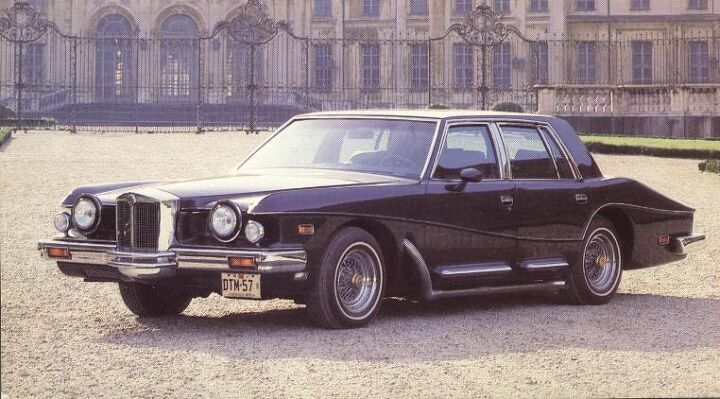
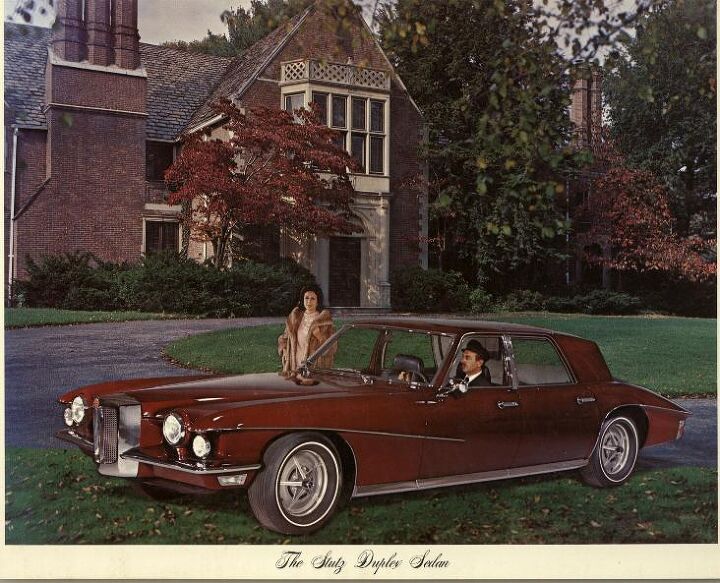

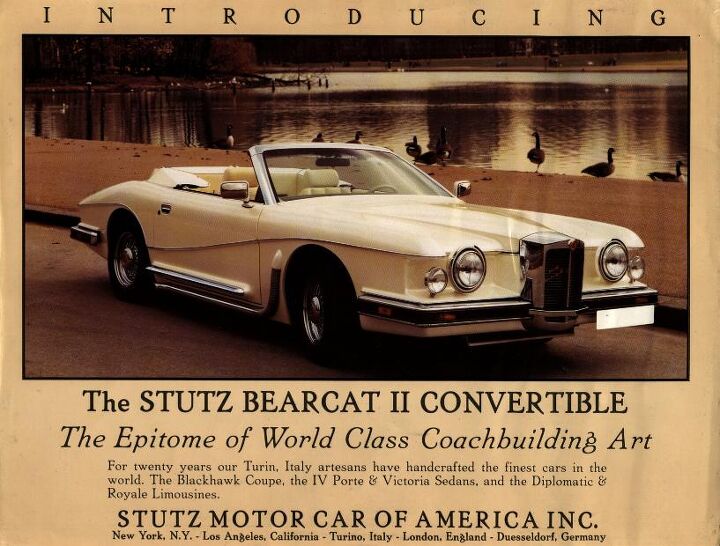
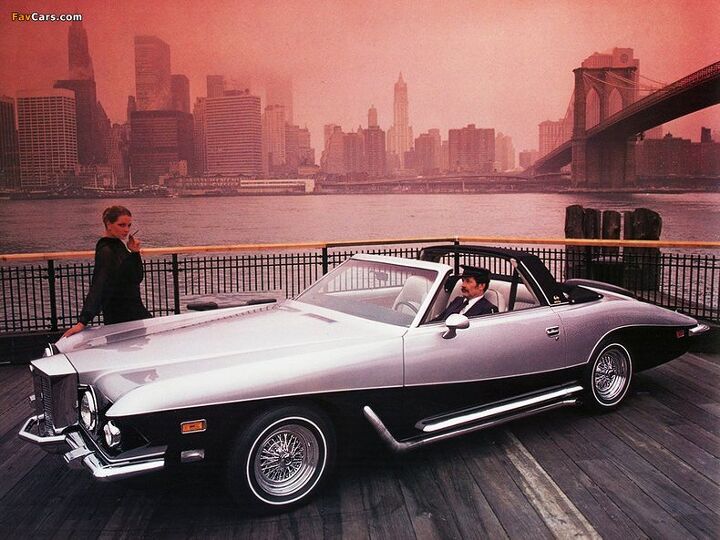
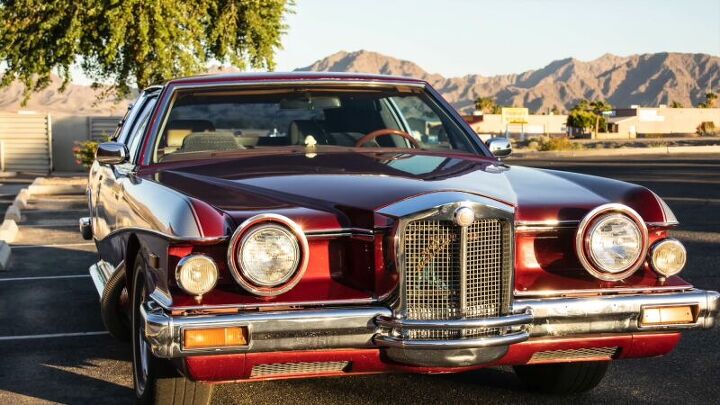
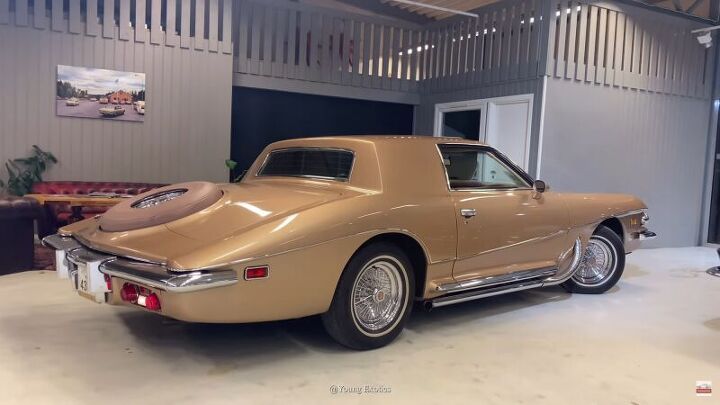
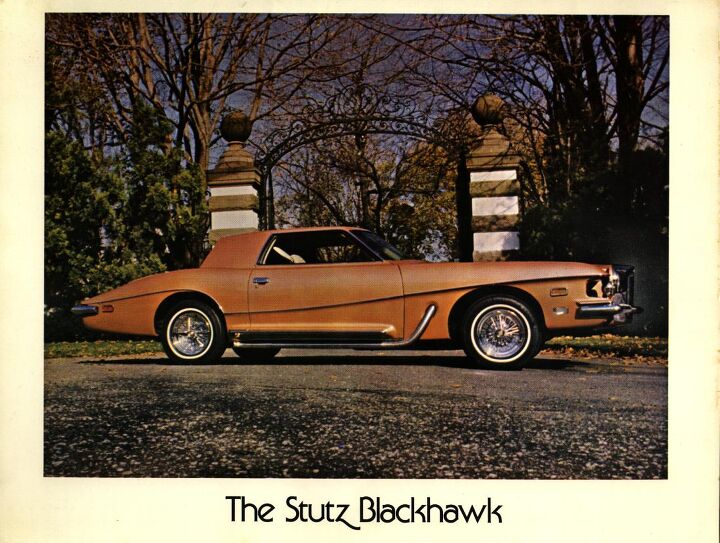

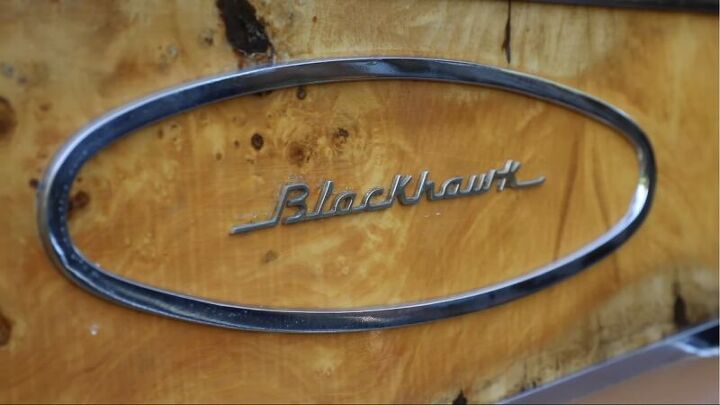



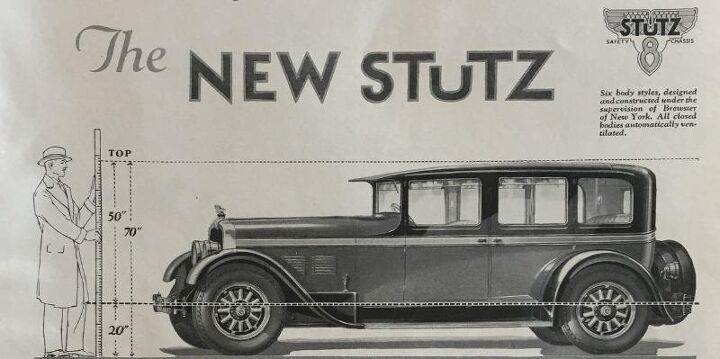
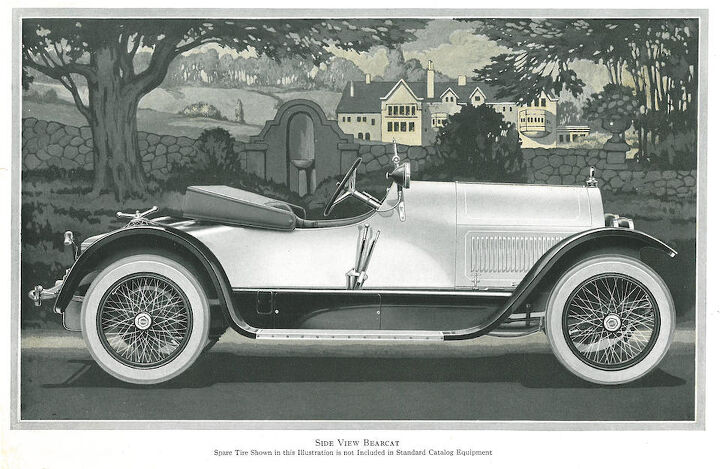
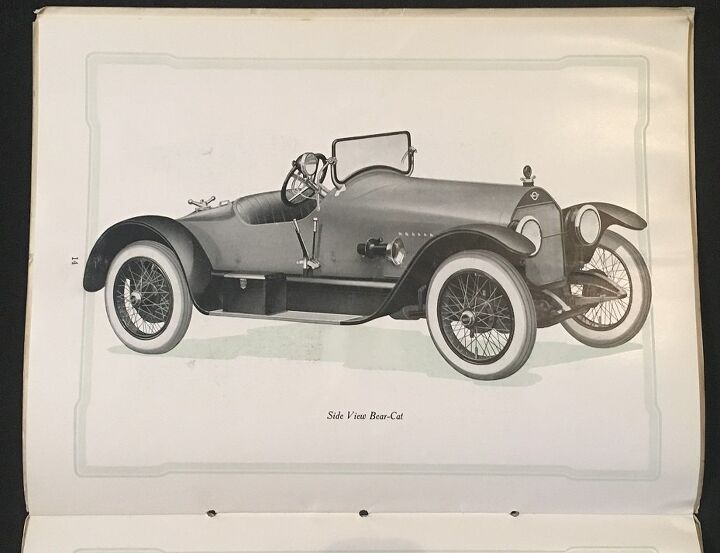
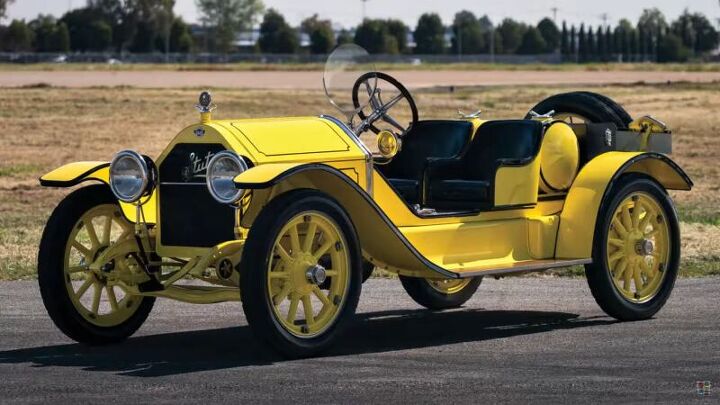












Recent Comments